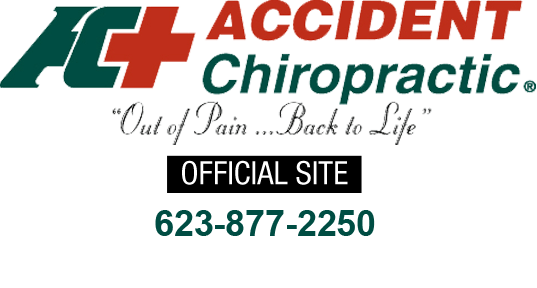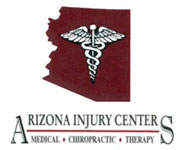You're on your way home from work when you have to stop at a light. Like the careful driver you are, you come slowly to a stop and wait for the light to change.
But the driver behind you wasn't so careful.
With a squeal of tires and the crunch of metal, the other driver's car slams into your fender. Thankfully you had your seatbelt on, so you weren't thrown through the window. But your head whipped back and forth like a helpless ragdoll.
While you didn't suffer any visible injuries, such as a deep cut or broken arm, you did experience some whiplash from the accident.
What Is Whiplash?
Whiplash is a non-medical term that refers to a variety of head and neck injuries. It is most commonly the result of automobile accidents, though you may also experience it when you ride on a roller coaster, when you play contact sports, and even when you slip and fall.
To understand whiplash, you must first understand some basic anatomy. Your neck has seven vertebrae, known as the cervical vertebrae, which support your skull. Soft tissue and muscles surround these vertebrae, which enables you to move your head from side to side and from back to front.
In the case of a fender bender, the other car pushes your car out from under you. This forces your spine against your seat. As your torso moves forward, your head moves backward, compressing the vertebrae in your neck.
But you're not done yet.
Your seatbelt stops your torso's forward movement, so the acceleration travels up your spine and into your neck. Your head continues unimpeded by the seatbelt, so your neck slams forward. The sudden bending back and forth movement strains muscles and forces the vertebrae out of their normal position.
Signs You May Have Whiplash
Because whiplash doesn't always leave a visible mark, many people dismiss it as only a minor injury. However, more serious cases of whiplash may take weeks for a full recovery, and some cases also result in concussions and similar head injuries.
Many whiplash symptoms develop within 24 hours, while other symptoms may occur several days after the accident. If you experience any of the following, you may have whiplash:
- Blurred vision
- Difficulty concentrating
- Difficulty rotating the head
- Dizziness
- Fatigue
- Headaches
- Jaw tightness
- Memory problems
- Muscle spasms in the neck
- Neck pain
- Sleep disturbances
- Tinnitus (ringing in the ears)
If you experience neck pain that radiates down to your arms and legs, or if you experience tingling, visual changes, or nausea alongside your neck pain, go to the emergency room for treatment.
Recovering from Whiplash
Even if your symptoms are minor, it may take time for your body to heal. While many people who suffer from whiplash recover in the first two or three months, several people experience chronic pain up to two years after the injury. This chronic pain often traces back to damage in the joints, ligaments, and vertebrae in the neck.
Fortunately, you have multiple options to help you cope with the pain:
Ice Your Neck
Icing your neck reduces pain and swelling. Wrap ice in a towel or cloth, then apply it to your neck for 30 minutes every 3 to 4 hours for the first few days after the injury.
Limit Motion
For the next few days, you may want to limit the motion of your head and neck, at least until the pain and tightness leave. If necessary, you may use a neck brace or collar to support your neck. Keep in mind that you do not want to use a neck brace for long-term use, as this could weaken your neck muscles.
Stay Positive
Your attitude has a surprising effect on your whiplash recovery. According to a study published by the Institute for Work and Health, individuals who focused negative thoughts such as "this pain is wearing me down" experienced slower recover than those who took more active methods to controlgative thoughts such as "this pain is wearing me down" experienced slower recover than those who took more active methods to controltheir pain.
If you worry that the psychological effects of the accident are slowing your recovery, consider seeking professional guidance to cope with the trauma.
Take NSAIDs or Other Approved Pain Killers
Depending on the severity of your injury, your doctor may recommend taking non-steroidal anti-inflammatory drugs (NSAIDs), such as ibuprofen or Aleve. These medicines often reduce pain and swelling. However, you should not use these medications regularly without doctor approval.
If these painkillers do not work, your doctor may recommend prescription painkillers or muscle relaxants.
Try Chiropractic Care
Because whiplash primarily affects the muscles in the head and neck, chiropractic care often provides relief. This treatment realigns the vertebrae in the neck and spine, creating the ideal environment for healing.
If you were in a car accident and suffered whiplash, call your chiropractic doctor to establish a treatment plan for relief.

